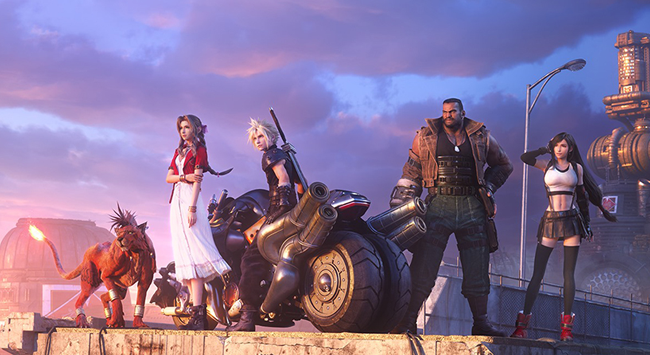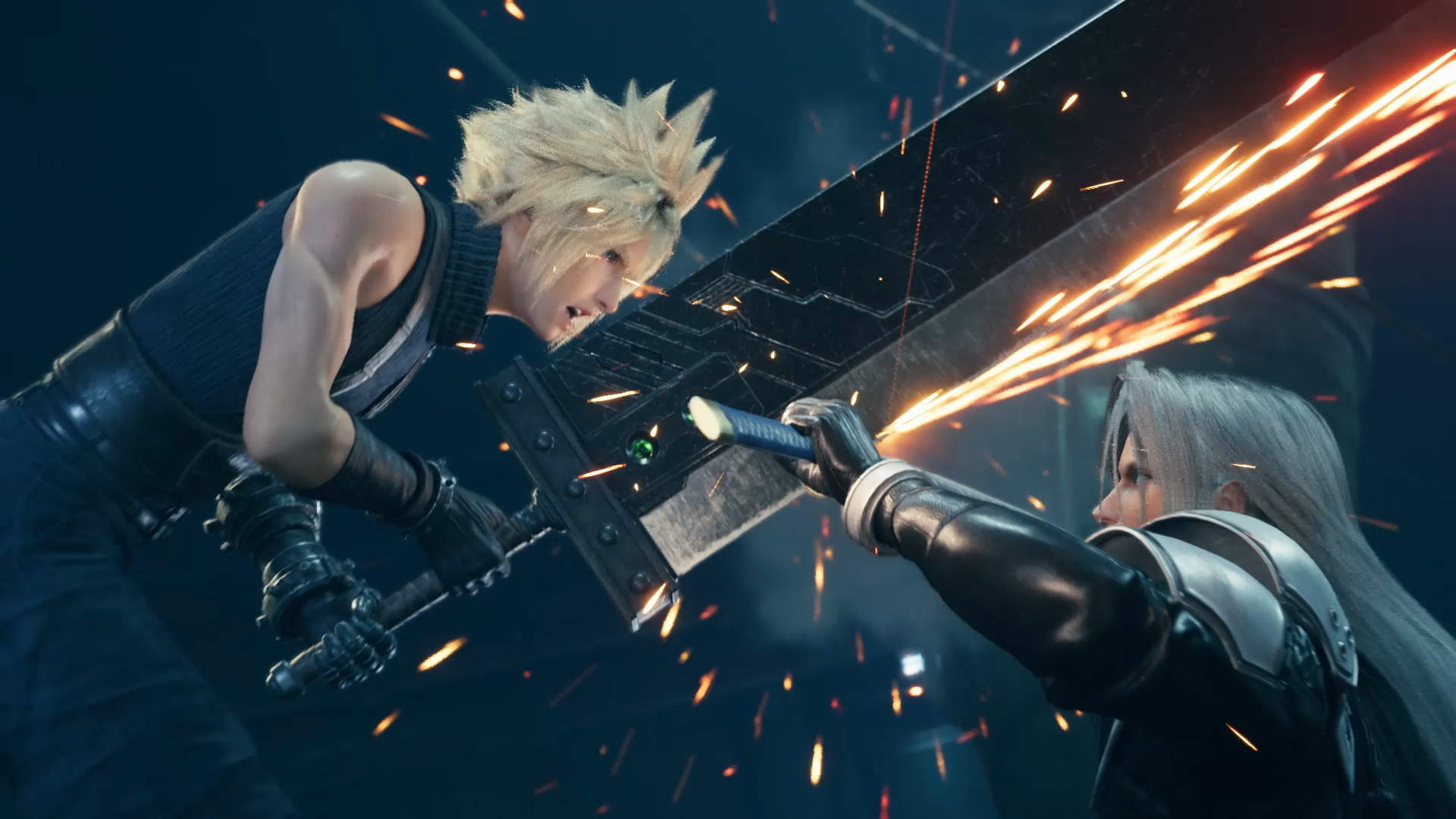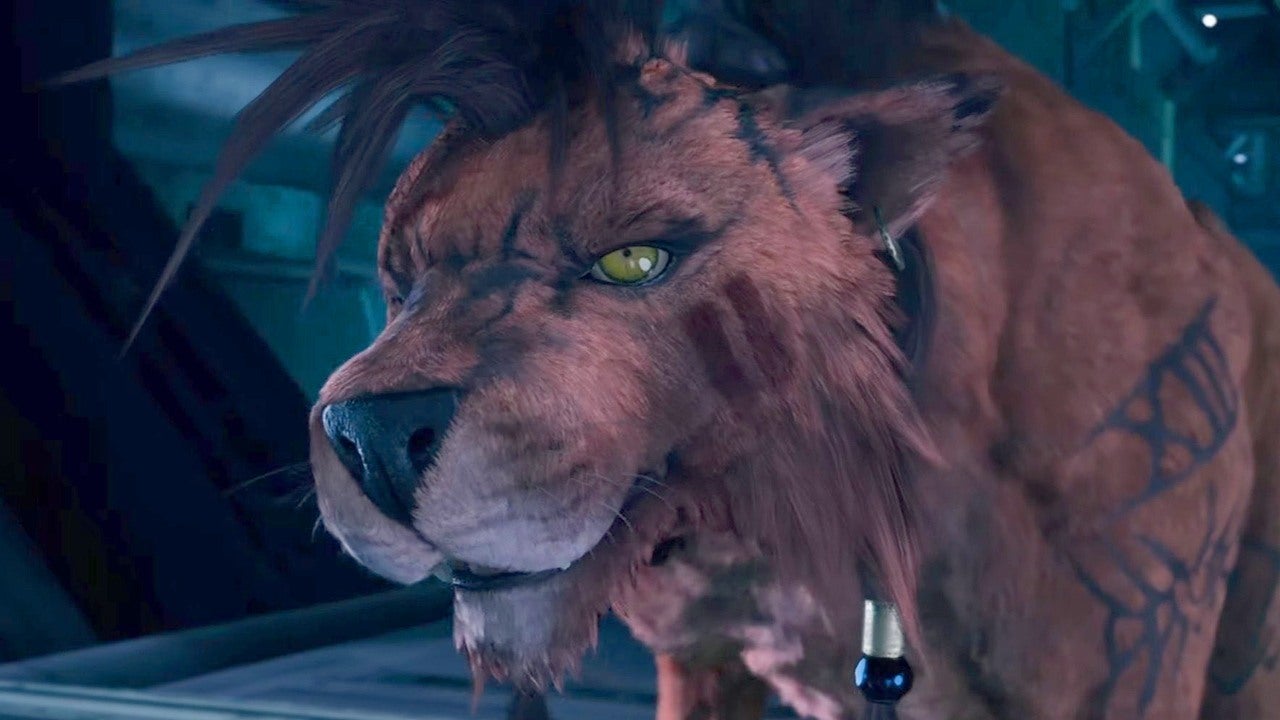SPOILER WARNING: This article contains major spoilers for Final Fantasy VII Remake. If you have not finished the game or you don’t want to know about major events that occur, do not read any further.
Some early trailers made it clear that something was up in Final Fantasy VII Remake. On Loveless Street, Aerith was being pestered by ghostly creatures, something not present in the original game. What was this new element in the Remake? Are these ghosts simply added context to Midgar, or something else entirely? The floating rags continue to make appearances throughout the game, blocking off certain paths and forcing our characters in specific directions. Instead of the story making meaningful plot choices, these ghostly figures literally force the narrative to move in specific directions. It made me a bit mad at first. I’m not a fan of MacGuffins used to force narratives to take unnatural turns. Why not just make the game like the original?
And then we find out that’s… kind of the entire point.
The ghostly figures are called Whispers, arbiters of fate, keepers of destiny. And for all of Final Fantasy VII Remake, the Whispers have kept the story on track whenever it seems that it may deviate from the original 1997 game’s plot.
When Cloud doesn’t get to head down the pinball machine elevator to the secret Avalanche hideout under Seventh Heaven, he gets left out of the mission to destroy Reactor 5. Of course, as any player of the original knows, Cloud is very much a part of that mission, so the Whispers intervene, injuring Jessie and making Wedge to stay behind with her, which forces Cloud and Tifa to go on that mission, the fake IDs to get flagged, the team to leap off the train early, and the overall story to march forward as it all once played out. With a few minor changes, anyway. Fate isn’t perfect, after all.
There are a number of other notable events from the original game where things seem to deviate in the Remake, but the Whispers intervene. Wedge seems to escape his fate at the destruction at the pillar, only to be thought dead, only to be found alive, and finally hurled from the upper floors of Shinra by the Whispers—a kind of Final Destination-style fate saying “you originally died after a fall, you need to die in a fall.”
In the offices at Shinra, the party witnesses Sephiroth kill President Shinra, something that they weren’t present for in the original (they only came upon the aftermath and didn’t actually see Sephiroth until much later in the game). This prompts Barret to engage the silver-haired villain, who then skewers him through with his sword, a fate once thought reserved for another member of the party (and for much later in the game). When I got here, I was in shock… Would Square Enix actually follow through with a change that massive to the original game? Could Barret have really… died? But no, once again, the Whispers intervened, bringing Barret back to life. Red XIII makes a comment about it not being his time to die. The MacGuffin strikes again, weaving the elements of fate in specific ways, natural story evolution be damned.
And then comes the final fight of the game, a new battle at the end of Midgar’s unfinished highway. Here, the party enters a portal with the goal of taking on fate itself, fighting the grand Whisper and a series of smaller ones that mimic Cloud, Barret, and Tifa (that’s some really Kingdom Hearts bullshit, but I’ll forgive it). The idea here is planted by Sephiroth. Break free from the chains of fate and destiny. You can fight it. It doesn’t have to go down like it’s “supposed” to.
While the idea seems completely out of left field, it actually takes a lot of cues from the original Final Fantasy VII, which had an enormous underlying theme of fate’s guiding hand. Sure, it wasn’t nearly as obvious as a bunch of ghostly figures literally throwing Wedge off of a building or reincarnating Barret after his premature death, but Sephiroth’s entire motivation was driven by becoming one with the Lifestream and seeing future events. He believed in his own destiny as a god, being born of Jenova, protector of the planet. Ironically, his goals kind of line up with those of Avalanche, only he wants to end all of humanity in order to protect the planet, not just blow up a few reactors. But the idea of fate certainly didn’t manifest as physical beings that pushed and pulled to keep the story on track.
A Meta Commentary on Final Fantasy VII Remake’s Creative Process
So where does the Remake’s new twist on fate come from? The Whispers are quite literally representative of the challenges that Square Enix faces in crafting a remake of one of the most beloved games of all time. No matter what kinds of changes Square Enix wants to make, the whispers of the fans, the whispers of history, are always tugging at them, pushing and pulling the direction that they can take this new story in.
“What if Cloud wasn’t a part of the Reactor 5 mission?” No, he has to be. “Maybe we can let some members of Avalanche survive!” Absolutely not. Jessie, Biggs, and Wedge have to die at the pillar. “What if we killed off a different main character, like Barret?” Nope, bring him back to life. Whispers are evidence that Square Enix is following a very specific story path that was already laid out in the 1997 original, and yet…
The number of differences in Final Fantasy VII Remake is actually pretty huge. Cloud never gets to see the secret Avalanche hideout under Seventh Heaven, a seemingly small design decision, but one that’s important to consider. Wedge does make it out of the pillar collapse alive. Sure, he dies later, but the ripples of changed events are already in place. So much so that it revealed a previously undiscovered underground lab beneath the Sector 7 slums. Biggs is revealed to still be alive in the end too, another fate-defying moment as if Square Enix is saying “We understand there are certain things we can’t change, but please also understand that we can change things.”
Despite the Whispers of fate literally making sure the story stays on track, Square Enix shows that fate can be defied. These story beats are likely conditioning players to be ready for some even bigger changes to come. At this point, I’m expecting that some locations and events in part two (and three, and maybe even four) will be altered or even committed altogether while completely new things will be added. Will we still journey from Kalm to the Chocobo Ranch, see the Midgar Zolom impaled on its spike, journey to Junon then Costa del Sol? How will the optional characters Yuffie and Vincent factor in? What events are “locked in” by the fates and what are allowed to be changed? Of course, that’s entirely in Square Enix’s hands, but the creative process for Final Fantasy VII Remake has very obviously and literally included the knife’s edge that is finding balance between the original game and this reinterpretation.
Whispers of Fate: The New Canon?
There have been a number of people wondering how Final Fantasy VII Remake fits into the canon. Is this the “correct” version of Final Fantasy VII? Does that mean the original is irrelevant? We’ll have to see how the story plays out on the larger stage, but I believe both remain canon. Whether this one is an alternate universe or the original was a “vision of fate,” this game is clearly playing into the idea that the original is how things are “supposed” to be and this one want to change some of those things.
Perhaps most deviously, Sephiroth wants to harness that idea because he is ultimately fated to lose. If Sephiroth can turn the party’s attention to fighting what fate has in store, then it’s possible that he could actually succeed in his goals. This is why the final boss fight against the (again, really Kingdom Hearts-y) Whispers of Fate is such a crucial piece of the puzzle. Sephiroth is quite literally using the tragedies that the party faces as a way to get them to fight against it. He’s seen the future. He knows what is to come. He ultimately knows he loses in the grand scheme of things. But if things can be different… if Cloud and his friends can fight back against fate… doesn’t that feasibly mean he too could triumph over his inevitable loss? Could being unwilling to accept destiny be what causes Sephiroth to emerge victorious because that is one of the destined events?
It’s a fascinating new twist on the story, almost presenting the original Final Fantasy VII as a “template” of sort for fate or destiny. Yet it also hinges on the meta-acknowledgement of the game that came more than two decades earlier. Even calling this new game Final Fantasy VII Remake blatantly admits that it is not the original. There’s an added meta-villain that is 23 years of expectation and fandom. It gnaws at the creativity of the team. So why not add it into the game itself, manifest as the Whispers of Fate?
No matter how many things changed from the original game, ultimately we’re still right back on track where we were before. The party has left Midgar behind. The “man in black” (Sephiroth) is on the move and they must hunt him down. President Shinra is dead and Rufus Shinra has moved to fill the power vacuum. As brazenly bizarre as the final moments of Final Fantasy VII Remake were, most everything is right on track to follow the template that destiny has laid out. It’s undoubtedly not the last time this group will have some friction with the Whispers, even having supposedly “defeated” the ultimate Whisper of Fate. Destiny is a much more powerful foe than one might imagine. There are too many iconic moments, places, and characters that remain to have the entire rest of the narrative go completely off the rails. While Square Enix was obviously trying to hint that the wider future narrative could and will be different, I think the development team is just as much at the whims of the Whispers for future parts of Final Fantasy VII Remake.








